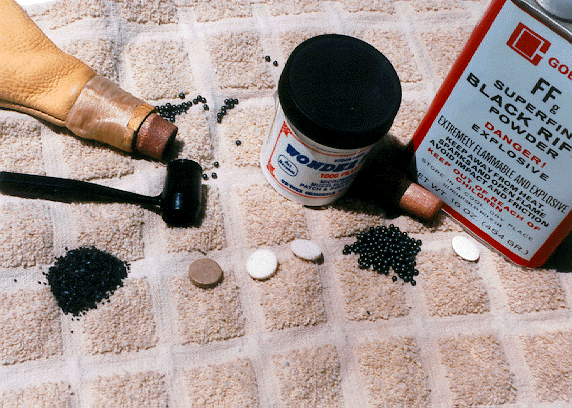|
Muzzle Blasts Online |
|
...for the muzzleloading enthusiast |
|
The muzzleblasts.com domain, subdomains, content, etc., are neither affiliated with the NMLRA nor its paper magazine Muzzle Blasts |
|
Muzzle Blasts Online |
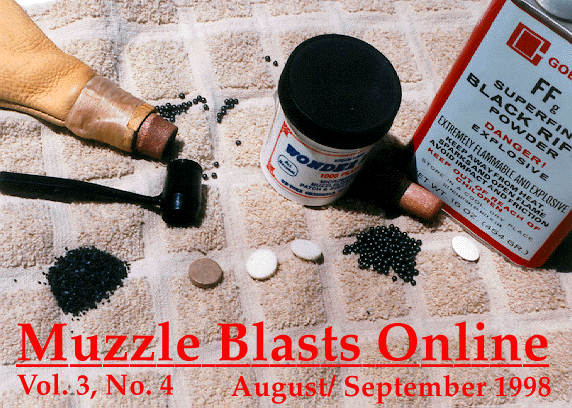
|
|
|
|
|
|
Shot Patterns and Smoothbores
The fact is that in order to shoot shot in a smoothbore you have to spend as much time (and quite possibly more) to work out the bugs. Like rifles, smoothbores are very finicky as to what they will shoot well. Rarely are two alike. One gun shoots #4 shot to a perfect pattern and the next gives a pattern that you could sail a dinner plate through without a scratch. I really can't tell you why, only that it happens. Here are some hints you might try if you'd like to improve your patterns.
First of all, most smoothbores bought off the shelf have not been subjected to the tender loving care a custom gunsmith would give his guns, so your barrel may still have some boring (machining) marks in it. A cleaning rod with "0000" steel wool run up and down in the barrel a couple hundred times will go a long way to make your bore smoother. (It also helps your accuracy when shooting the patched round-ball.) Once that's done it's time to go to the range.
Just about everything I've read on patterning a shotgun or smoothbore says to pattern the gun at thirty yards. Why? I feel that you should pattern your gun at the distance you intend to shoot. If you intend to shoot at twenty-five yards, set your target there. A smoothbore has no choke; it is cylinder bored, so its effective range will be limited. More on that later. First we need to develop a load.
I would suggest that you start with an equal volume load, which uses the same volume of shot as of powder. Repeat: volume, not weight! With my fusil, a .62 caliber (20 gauge) I would use the 7/8ths of an ounce of shot setting on my Lee shot measure for my powder measure. This throws 65 grains of FFg powder. I then add an overpowder hard wad which is .125" (1/8") thick. Then I put in two "Ox-Yoke Orignials" Wonder WadsTM cushion wads that I've lubed, and then the same measure of shot that I used for powder. Over that I use an over-shot wad that is only .030" thick. It helps to poke a hole in it with an awl or knife to ease loading. (That lets the air escape, but not the shot).
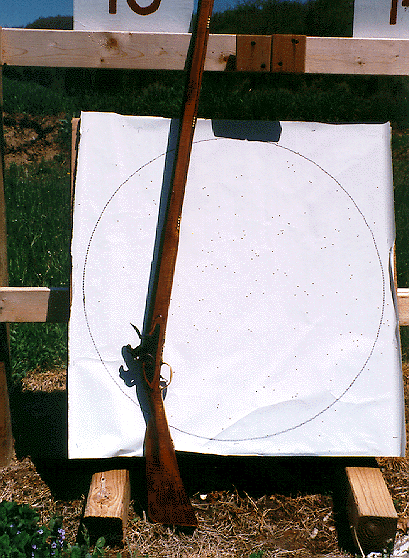
|
|
You've got to visit the range to find out what's required. If you intend to shoot at twenty-five |

|
|
Determining POA (Point of Aim) is the first step in finding out how youur smoothbore deals with shot. Here it is low and to the right |
When you make any changes, change only one thing at a time, like the powder charge. Then shoot three or four shots and write down the results. This will save valuable information and avoid duplication. I normally carry a small note pad and pen when I go to the range. My memory is less reliable than a written record.
Once you have worked out the best wad arrangement, you might want to see if shot size is a factor. As we stated earlier, some guns will shoot #4 shot well and others won't. You will have to try several different sizes to see how they pattern out of your gun. Of course what you plan to shoot at makes a difference too; you wouldn't want to use #4 shot to shoot sporting clays, just as you wouldn't use #9 shot to hunt turkey. Once you've got a good pattern, shoot it at 20 yards, then 30, 35, and even out to 40 yards. This will show you what the effective range of that load is, since the pattern will hold together only so far. Now go up to the heavier, or hunting loads (more powder/more shot) and do the process over again, but don't ever exceed the maximum load recommended by the gun's manufacturer.
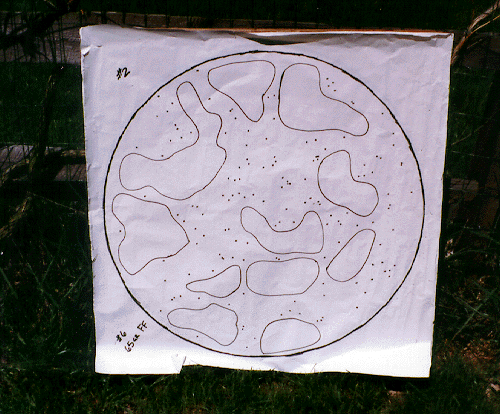
|
|
Here is a good example of a bad pattern. A quail could have flown through some of those holes and felt only a breeze |
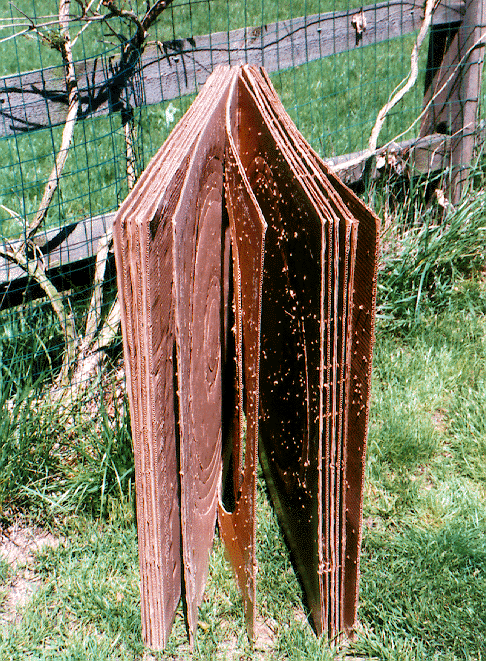
|
|
This laminated cardboard backing for the target opens up to show penetration through seven layers--obviously enough for small game |
It takes time to work up a good load for a rifle, and it takes time to work up a good load for shot, but when you see those clays turn to dust or walk toward that twenty-five pound gobbler you've been calling in for the last three hours, you will be paid back many times over!
